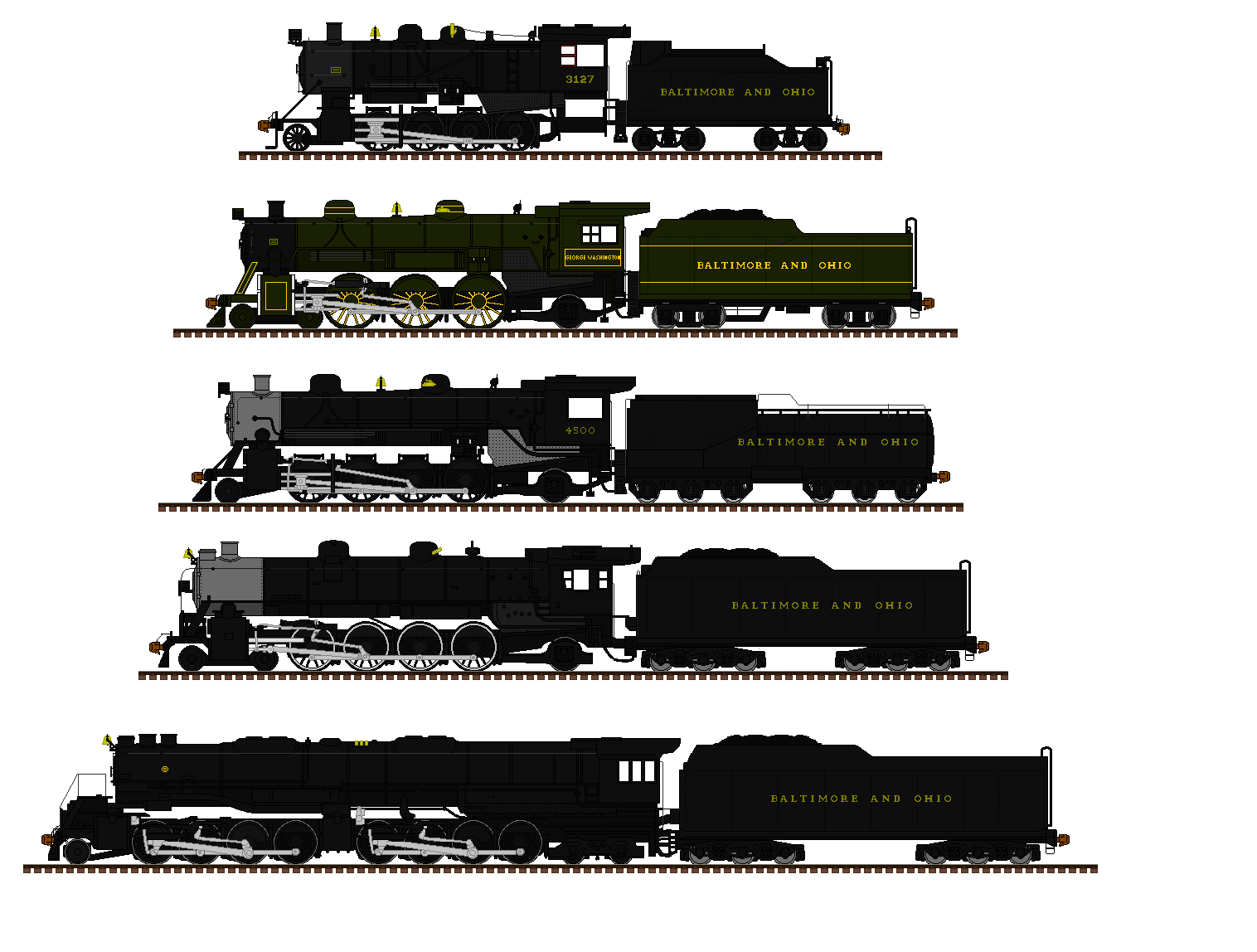HOME | DD
 Andrewk4 — BO Steam Locomotives
Andrewk4 — BO Steam Locomotives

Published: 2016-08-05 20:09:02 +0000 UTC; Views: 3672; Favourites: 39; Downloads: 88
Redirect to original
Related content
Comments: 3

In 1905, the American Locomotive Company constructed (228) class 'E-27' 2-8-0 consolidations for the Baltimore and Ohio Railroad, usually assigned to the districts and branches where the tracks usually hold the weight of lighter engines.
First modified of producing 49,000 Ibs of tractive effort and boiler pressure at 205 psi, they were upgraded into 215 psi boiler pressure and 50,800 Ibs of tractive effort in 1923.
Unfortunately even the light tougher consolidations couldn't outmatch the leeching-acquisition of modern diesels and switchers, forced to suffer the scrapper's torch in the mid 1950's.
None of these B&O steamers survived ever since.
After five years of the 1st world war, the B&O was allocated no less or more than (100) U.S.R.A. light 'Mikado's built by the Baldwin Locomotive Works.
These 2-8-2's were manufactured with 63 inch diameter driving wheels each fitted immediately with thicker tires which bring them up to the B&O 64 inch diameter standard, reducing a starting tractive effort of 53,868 pounds.
Designated as class 'Q-3's, the 2-8-2's had been assigned with road numbers from 4500 up to 4599.
On the mainline and branch lines in Eastern America, the 'Q-3's operated on mixed traffic service until dieselization intervened in replacement to all steam power by 1960.
Of the (100) 'Q-3' class 2-8-2 Mikados of the Baltimore & Ohio, only one sample remains today; no. 4500 - currently on display at the Baltimore and Ohio Railroad Museum in Baltimore, Maryland.
👍: 0 ⏩: 0

Not bad, although you made a mistake on #4500's tender. #4500 had a USRA tender. But aside from that, not bad. 5 stars.
👍: 0 ⏩: 1

Thank you for the good rating! I decided to include a Vanderbilt tender on the 4500 to give a little more variety to the B&O locomotives. Some of the 2-8-2s and 4-6-2s had Vanderbilt tenders later on, although I am not sure if the 4500 ever had one.
👍: 0 ⏩: 0

























